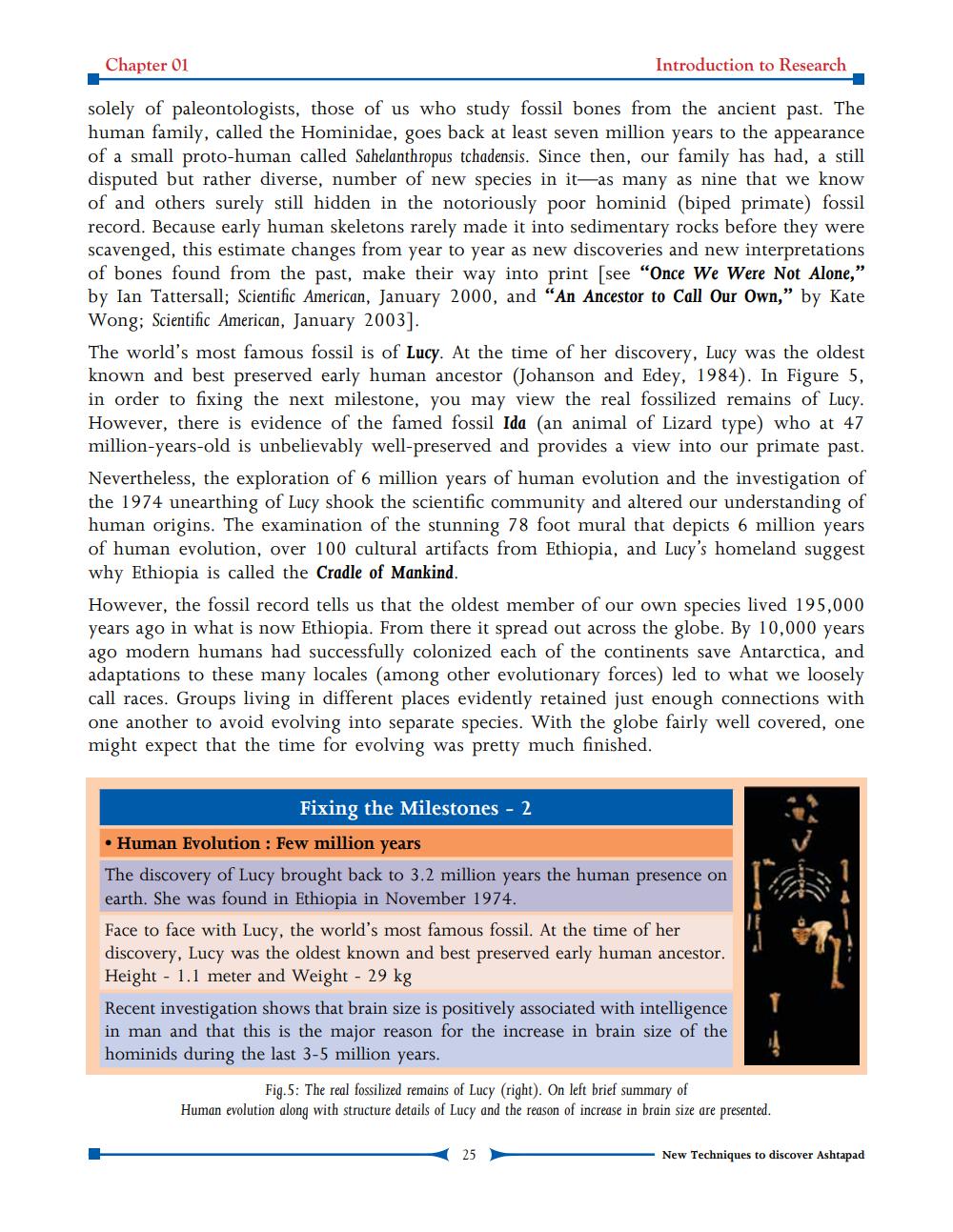________________
Chapter 01
Introduction to Research
solely of paleontologists, those of us who study fossil bones from the ancient past. The human family, called the Hominidae, goes back at least seven million years to the appearance of a small proto-human called Sahelanthropus tchadensis. Since then, our family has had, a still disputed but rather diverse, number of new species in it—as many as nine that we know of and others surely still hidden in the notoriously poor hominid (biped primate) fossil record. Because early human skeletons rarely made it into sedimentary rocks before they were scavenged, this estimate changes from year to year as new discoveries and new interpretations of bones found from the past, make their way into print (see "Once We Were Not Alone," by Ian Tattersall; Scientific American, January 2000, and "An Ancestor to Call Our Own," by Kate Wong; Scientific American, January 2003]. The world's most famous fossil is of Lucy. At the time of her discovery, Lucy was the oldest known and best preserved early human ancestor (Johanson and Edey, 1984). In Figure 5, in order to fixing the next milestone, you may view the real fossilized remains of Lucy. However, there is evidence of the famed fossil Ida (an animal of Lizard type) who at 47 million-years-old is unbelievably well-preserved and provides a view into our primate past. Nevertheless, the exploration of 6 million years of human evolution and the investigation of the 1974 unearthing of Lucy shook the scientific community and altered our understanding of human origins. The examination of the stunning 78 foot mural that depicts 6 million years of human evolution, over 100 cultural artifacts from Ethiopia, and Lucy's homeland suggest why Ethiopia is called the Cradle of Mankind. However, the fossil record tells us that the oldest member of our own species lived 195,000 years ago in what is now Ethiopia. From there it spread out across the globe. By 10,000 years ago modern humans had successfully colonized each of the continents save Antarctica, and adaptations to these many locales (among other evolutionary forces) led to what we loosely call races. Groups living in different places evidently retained just enough connections with one another to avoid evolving into separate species. With the globe fairly well covered, one might expect that the time for evolving was pretty much finished.
Fixing the Milestones - 2 • Human Evolution : Few million years The discovery of Lucy brought back to 3.2 million years the human presence on earth. She was found in Ethiopia in November 1974. Face to face with Lucy, the world's most famous fossil. At the time of her discovery, Lucy was the oldest known and best preserved early human ancestor. Height - 1.1 meter and Weight - 29 kg Recent investigation shows that brain size is positively associated with intelligence in man and that this is the major reason for the increase in brain size of the hominids during the last 3-5 million years.
Fig.5: The real fossilized remains of Lucy (right). On left brief summary of Human evolution along with structure details of Lucy and the reason of increase in brain size are presented.
25
- New Techniques to discover Ashtapad




